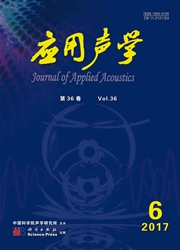

 中文摘要:
中文摘要:
利用实轴积分法对偶极子声源在径向厚度有限的模拟地层井孔中激发的声场进行了数值模拟,考察了不同声源、源距、模拟地层半径和最外层吸卢介质对升内声场的影响。数值计算结果表明:对丁偶极子声源,如果模拟地层为声速较低的泥岩,无论最外层吸卢介质为流体还是固体,在源距为3.0-4.064m时,模拟地层半径为1.2m就能保证刻度井中的“初至波”不受模拟地层外边界的影响;若要使声波全波列的主要部分不受该界面的影响,则模拟地层的半径需要更大;如果模拟地层为声速很高的白云岩,最外层吸声材料宜使用声阻抗合适的固体介质,即使这样,模拟地层半径还需达到2.6m。这些结果可为模块地层声速刻度井的构建提供理论参考。
 英文摘要:
英文摘要:
The acoustic fields in a borehole embedded in simulated formations with a finite radial thickness excited by dipole sources are numerically studied by using the real axis integral method, and the effects of the source, the offset between the source and the receiver, the radius of the simulated formation, and the outmost absorption material on the acoustic field are investigated. Numerical results show that for dipole sources, the radius of the simulated formation with low shear-wave velocity, such as shale, should be greater than 1.2 m to guarantee the "first arrival" not be affected by the outmost boundary of the formation whether with fluid or solid absorption material, provided the offsets ranging from 3.0 to 4.064 m. Much larger simulated formations are needed to ensure the main part of the full wavetrain not be affected by this outmost boundary. However, for the simulated formation with high shear-wave velocity, such as dolomite, this radius should be greater than 2.6 m even with solid absorption material. These results may provide theoretical references to the construction of the scaling pit relating to acoustic velocity.
 同期刊论文项目
同期刊论文项目
 同项目期刊论文
同项目期刊论文
 The Chebyshev spectral element method using staggered predictor and corrector for elastic wave simul
The Chebyshev spectral element method using staggered predictor and corrector for elastic wave simul A transient method for measuring the gas volume fraction in a mixed gas-liquid flow using acoustic r
A transient method for measuring the gas volume fraction in a mixed gas-liquid flow using acoustic r 期刊信息
期刊信息
